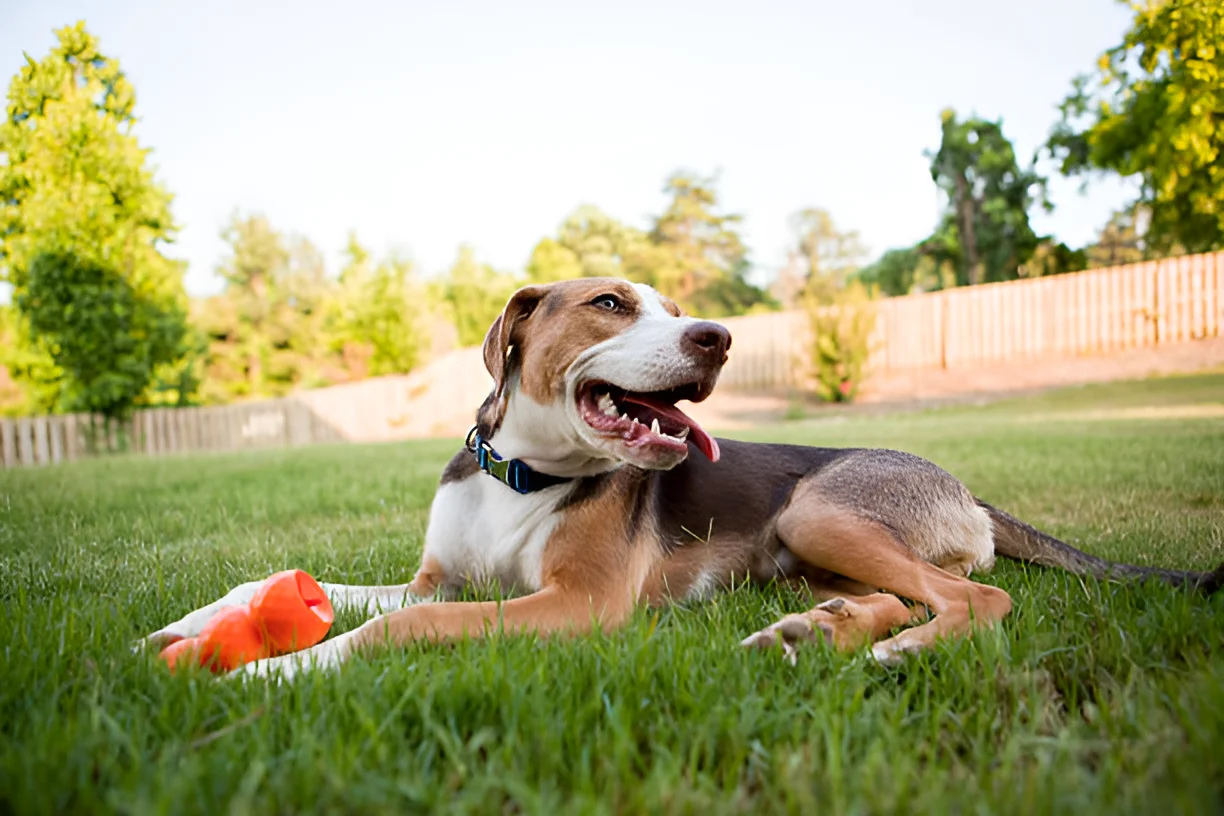Leaving a dog in a fenced yard can be acceptable for short periods, but it is not ideal for long-term confinement due to potential health, safety, and behavioral issues. This article explores the pros and cons of leaving a dog in a fenced yard, the potential risks, and best practices to ensure your dog’s well-being.
The Pros of Leaving a Dog in a Fenced Yard
Physical Exercise
A fenced yard provides a safe space for dogs to run, play, and exercise. This can be particularly beneficial for high-energy breeds that need plenty of physical activity to stay healthy and happy.
Mental Stimulation
Being outdoors offers dogs a variety of sensory experiences. They can explore different smells, sights, and sounds, which can be mentally stimulating and help prevent boredom.
Potty Breaks
A fenced yard allows dogs to relieve themselves without needing to be taken on a walk. This can be convenient for owners and provide dogs with more frequent opportunities to go outside.
The Cons of Leaving a Dog in a Fenced Yard
Lack of Supervision
One of the main concerns with leaving a dog in a fenced yard is the lack of supervision. Without supervision, dogs can get into trouble, such as digging under the fence, escaping, or encountering dangerous wildlife or aggressive dogs.
Behavioral Issues
Dogs left alone in a yard for extended periods can develop behavioral issues. These may include excessive barking, digging, chewing, and fence fighting. These behaviors often stem from boredom, loneliness, and lack of mental stimulation.
Safety Risks
Even in a fenced yard, dogs are not entirely safe. They can be exposed to various hazards, such as toxic plants, sharp objects, and extreme weather conditions. Additionally, invisible fences do not prevent other animals or people from entering the yard and potentially harming your dog.
Health and Well-being Concerns
Physical Health
Dogs need regular exercise, but a yard alone may not provide enough physical activity. Without sufficient exercise, dogs can become overweight and develop health issues such as joint problems and heart disease.
Mental Health
Dogs are social animals that thrive on interaction with their human families. Prolonged isolation in a yard can lead to anxiety, depression, and other mental health issues. Dogs need companionship and mental stimulation to stay happy and well-adjusted.
Best Practices for Leaving a Dog in a Fenced Yard
Supervised Time
Whenever possible, supervise your dog while they are in the yard. This allows you to monitor their behavior, ensure their safety, and provide interaction and playtime.
Enrichment Activities
Provide enrichment activities to keep your dog mentally stimulated. This can include interactive toys, puzzle feeders, and games like fetch or tug-of-war. Rotating toys and activities can help keep things interesting for your dog.
Safe Environment
Ensure the yard is safe and secure. Check for any potential hazards, such as toxic plants, sharp objects, or gaps in the fence. Provide shelter from the elements, such as a doghouse or shaded area, and ensure your dog has access to fresh water at all times.
Regular Exercise
In addition to yard time, provide regular walks and exercise. This helps meet your dog’s physical and mental needs and provides opportunities for socialization and exploration.
Addressing Common Concerns
Escape Artists
Some dogs are skilled escape artists and may find ways to get out of the yard. To prevent this, ensure the fence is tall enough and check for any weak spots or gaps. Consider adding a barrier at the base of the fence to prevent digging.
Weather Conditions
Extreme weather conditions can pose a risk to dogs left in the yard. In hot weather, ensure your dog has access to shade and plenty of water. In cold weather, provide a warm shelter and limit their time outside.
Interaction and Socialization
Dogs need regular interaction and socialization to stay happy and well-adjusted. Spend quality time with your dog, both inside and outside the house. Arrange playdates with other dogs or visit dog parks to provide additional socialization opportunities.
Conclusion
In conclusion, while leaving a dog in a fenced yard can be acceptable for short periods, it is not ideal for long-term confinement. Dogs need regular supervision, mental stimulation, and social interaction to stay healthy and happy. By following best practices and addressing common concerns, you can ensure your dog enjoys their time in the yard safely and responsibly.
The photo featured below the post headline is Credit: Marilyn Nieves/istockphoto
I hope you find this post helpful and informative. If Yes’ feel free to share it with your friends!
Frequently Asked Questions
Is it safe to leave my dog in a fenced yard while I’m at work?
It is generally not recommended to leave a dog in a fenced yard for extended periods without supervision. Dogs can develop behavioral issues and face safety risks. Consider hiring a dog walker or using doggy daycare services.
How can I make my fenced yard more stimulating for my dog?
Provide interactive toys, puzzle feeders, and games like fetch or tug-of-war. Rotate toys and activities to keep things interesting. Ensure the yard is safe and free of hazards.
What should I do if my dog tries to escape the yard?
Ensure the fence is tall enough and check for weak spots or gaps. Consider adding a barrier at the base of the fence to prevent digging. Supervise your dog while they are in the yard.
How can I protect my dog from extreme weather conditions in the yard?
Provide shade and plenty of water in hot weather. In cold weather, provide a warm shelter and limit their time outside. Always ensure your dog has access to fresh water.
Are invisible fences a good option for keeping my dog in the yard?
Invisible fences can prevent dogs from leaving the yard but do not protect them from other animals or people entering the yard. Supervision is still necessary to ensure your dog’s safety.

